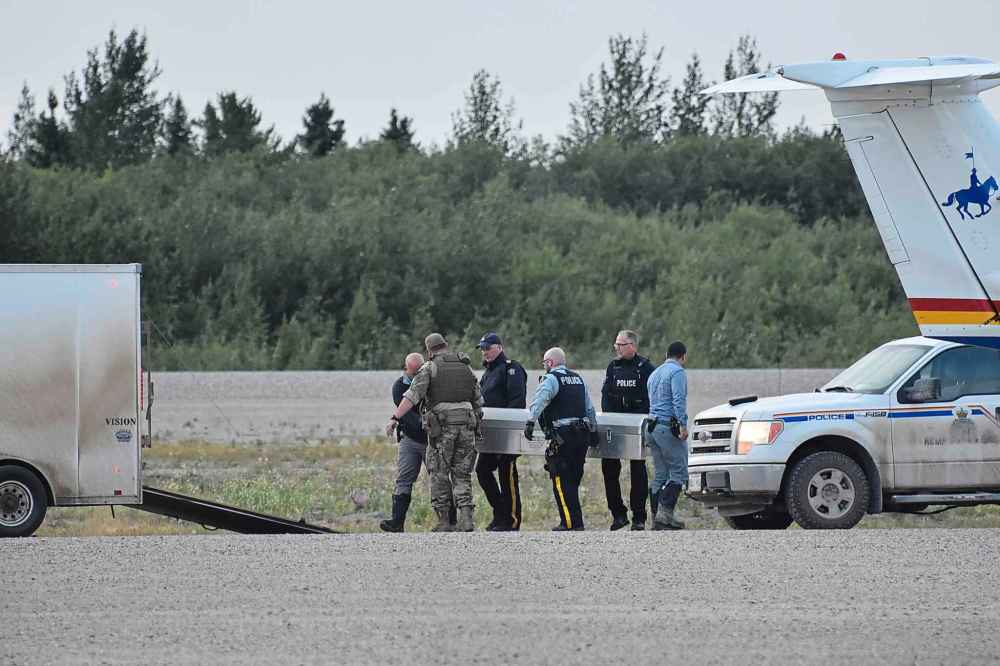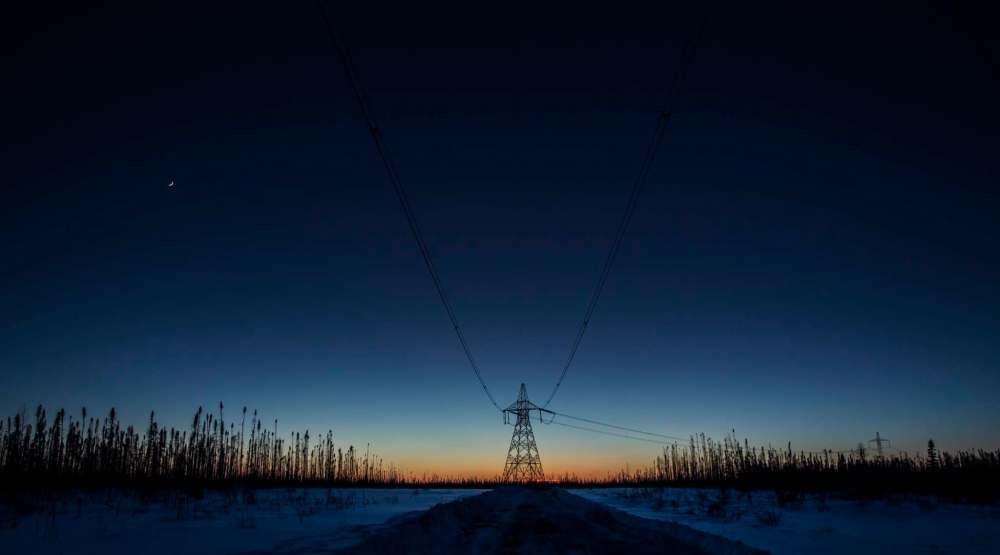Star light, star fright… Trauma, uncertainty of nation-gripping manhunt pierces beautiful, powerful, silent northern peace
Read this article for free:
or
Already have an account? Log in here »
To continue reading, please subscribe:
Monthly Digital Subscription
$0 for the first 4 weeks*
- Enjoy unlimited reading on winnipegfreepress.com
- Read the E-Edition, our digital replica newspaper
- Access News Break, our award-winning app
- Play interactive puzzles
*No charge for 4 weeks then price increases to the regular rate of $19.00 plus GST every four weeks. Offer available to new and qualified returning subscribers only. Cancel any time.
Monthly Digital Subscription
$4.75/week*
- Enjoy unlimited reading on winnipegfreepress.com
- Read the E-Edition, our digital replica newspaper
- Access News Break, our award-winning app
- Play interactive puzzles
*Billed as $19 plus GST every four weeks. Cancel any time.
To continue reading, please subscribe:
Add Free Press access to your Brandon Sun subscription for only an additional
$1 for the first 4 weeks*
*Your next subscription payment will increase by $1.00 and you will be charged $16.99 plus GST for four weeks. After four weeks, your payment will increase to $23.99 plus GST every four weeks.
Read unlimited articles for free today:
or
Already have an account? Log in here »
Hey there, time traveller!
This article was published 09/08/2019 (2316 days ago), so information in it may no longer be current.
Halfway through the manhunt, while police and military were combing the roads and forests around Gillam, while a tiny northern community had been taken hostage to the events unfolding on top of them, I thought about the stars.
To be sure, I knew little about the manhunt for alleged killers Kam McLeod and Bryer Schmegelsky. Only what my colleagues in media had reported, the minutiae of a search without answers.
Power surge

Posted:
From March 22, 2019: Manitoba Hydro's thirst for power nearly destroyed Fox Lake Cree Nation. Decades later, the northern community pushed back and won.
But I had been to Gillam in February, when the blackflies were sleeping and ice still gripped the dam-throttled river.
“Come back in the summer,” everyone there told us, but in truth, the winter suited us just fine. The biting cold is the heritage of the north and it told a story of its own: one about time and transcendence. Life, death and emergence. The north under the snow felt like a poem of all creation.
I told my companion, Free Press photographer Phil Hossack, that I wanted to see the stars.
On the drive back, along the sole road that connects Gillam to the rest of the province, we stopped at a pull-out, parking the truck near the slumbering bulk of some construction machine. We stood in the darkness, in a perfect windless silence, as the cold stole the feeling from fingers and cheeks.
Under the moonlight, the snow glowed with a ghostly luminescence against the looming silhouettes of the trees. The sky was endless and scattered with stars, celestial confetti flung through the universe by some incomprehensible act of astrophysics, by forces beyond our earthly measure or by the grace of God.
For a while, I felt as if I could fall upwards into it. As if the twinkling of the stars could loose the bonds of gravity that held me to my planet, and draw me to them, and that in that heavenward rise, I would not be frightened. It was the most peaceful experience I can remember, and the most beautiful thing I’d ever seen.

Six months later, halfway through the manhunt, I thought about that scene. It was strange to think that, were I to stand in the same place right then, I would have to be scared. That instead of gazing at the stars, I would have to squint into the darkness, to cock my ears towards any rustlings just behind the looming line of trees.
Two young men came to northern Manitoba from half a country away. They brought with them the suspicion of murdering three people, and the small army of police and soldiers that followed their wake. The manhunt was a search that gripped a nation, and left the communities in its path deeply afraid.
It was also a desecration of places that have known silence. Of Indigenous territories that have been lashed before by outsiders’ violence, and that have endured. There are three murder victims in this story. But there are thousands more who have been hurt by how it unfolded.
And in truth, it always seemed it would have to end the way that it did. The land around Gillam is vast, and it is inhospitable to those who do not respect its power. It is not, as some described it, an unlivable nightmare: Cree people have thrived there for millenniums. But they know what it can do.

Schmegelsky’s father told media that the two men considered themselves “survivalists.” It seemed doubtful that they’d survive. People can call themselves many things when they have the option of retreating from things that threaten to wash away their lives, of falling back into the embrace of the human world.
Or maybe the chase was the point, both the means and the ends. Maybe they never really intended to make it out alive. Because there’s a question that lingers, one that may never be answered with any satisfaction: where were they going that took them all the way to the end of the northern Manitoba road?
Wherever they thought they were headed, this is where they ended up: somewhere on the banks of the river.

This is how it happened: a tour guide boating on the Nelson River saw a blue sleeping bag in the water, the Globe and Mail reported. That sleeping bag led RCMP to find a ruined boat that had been through the rapids and, days later, the bodies of the two suspects.
RCMP have not yet said how they died. An autopsy is pending. Still, I am reminded of listening to a Fox Lake Cree Nation elder, who said the river is not an enemy, but it is also not a friend. It moves with its own power and its own interests; it does not pause to explain itself to those who don’t understand.

With the bodies recovered, flown out of Gillam Wednesday night in metal boxes, there ought to be time to reflect on how the manhunt unfolded. To think about how it was covered and why it gripped us; to wonder how, absent verified information, we clung to the smallest or most questionable details of all.
Since July 15, when Australian tourist Lucas Fowler and his American girlfriend Chynna Deese were found slain alongside a remote highway in northeastern B.C., the fear of their killers dominated headlines. Four days later, Leonard Dyck was found dead, allegedly killed by the same suspects.
There were sightings all over. Some were less credible than others: RCMP waved off reports that they had been spotted in northern Ontario. But they jumped on a report that the two men had been seen at a garbage dump near York Landing, 90 kilometres southwest of Gillam and inaccessible by road.
Police descended on that community too, and found nothing.
The fear flitted through social media, driving people to jump at any hint of an end to the story. A video of two men being arrested on Winnipeg’s Perimeter Highway made the rounds two weekends ago, along with a declaration it showed McLeod and Schmegelsky; that was, obviously, not the case.
Neither was the photo of a young man who bore a striking resemblance to McLeod, smirking as he held a copy of a newspaper bearing the suspect’s face. Upon closer examination, it was obvious it was not the same person, just an innocent doppelganger likely sending a tongue-in-cheek photo to friends.

Yet the image spread like wildfire on social media, and despite RCMP’s attempts to clarify the matter, many still believed what they had seen was a photo of a suspect taunting the searchers. It was a plot twist drawn out of a nightmare, but in the absence of news, worst fears find ample space to take root.
This, maybe, is what I’ll remember from watching the manhunt, from a distant and safe vantage. In and around Gillam, people locked their doors, nervously looked over their shoulders, even slept next to weapons. There, the threat was all too real, and it will take time to heal from that disruption.
But all across Canada, the threat found shape from the wilds that lurk in our imaginations.
For several weeks this summer, a nation turned its eyes to the north, and didn’t see stars. It saw only darkness, a void in which monsters lurk and no light can touch, and wondered when and where it would come for us.

melissa.martin@freepress.mb.ca
Our newsroom depends on a growing audience of readers to power our journalism. If you are not a paid reader, please consider becoming a subscriber.
Our newsroom depends on its audience of readers to power our journalism. Thank you for your support.


















